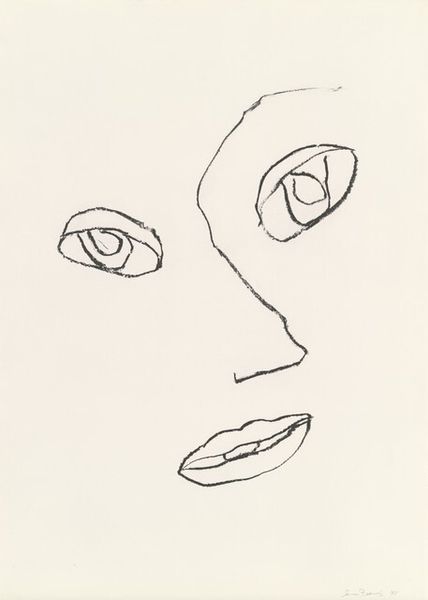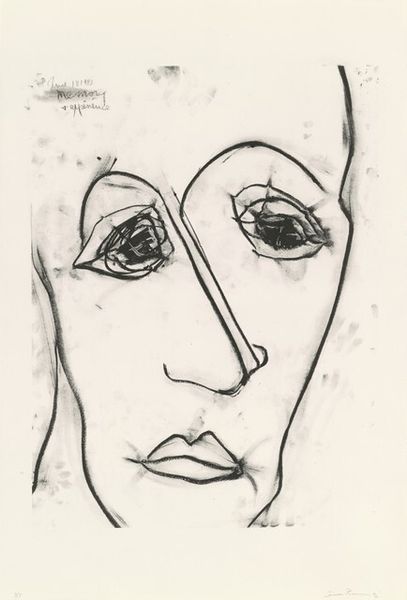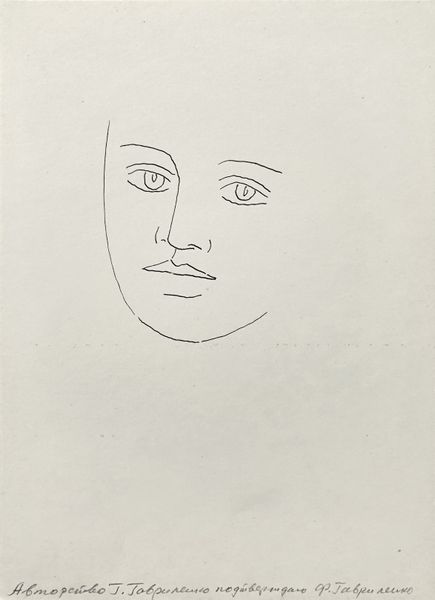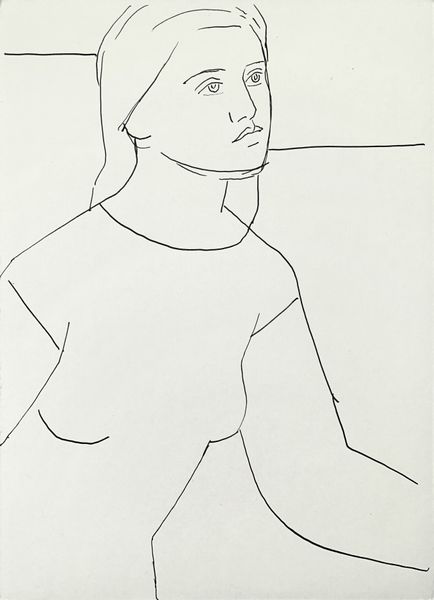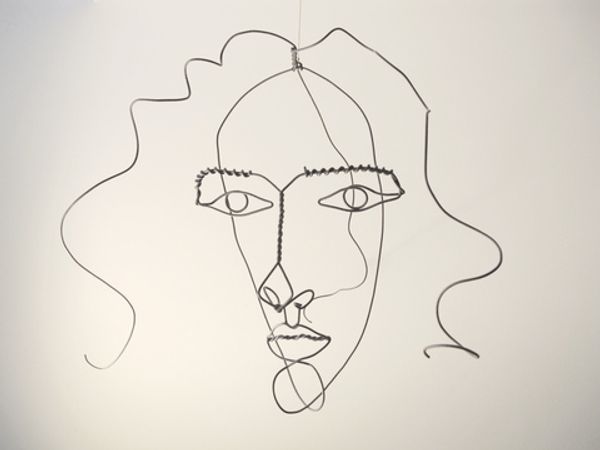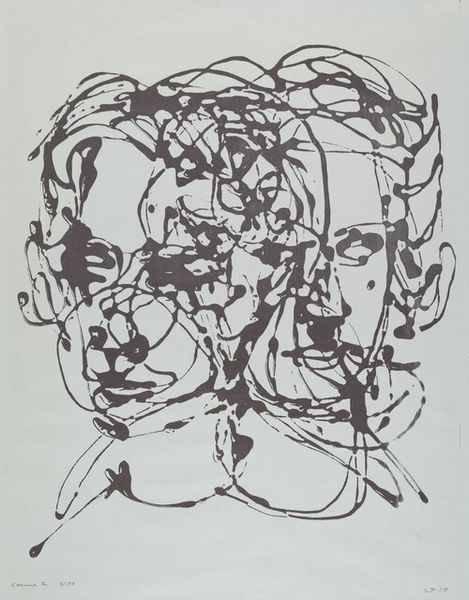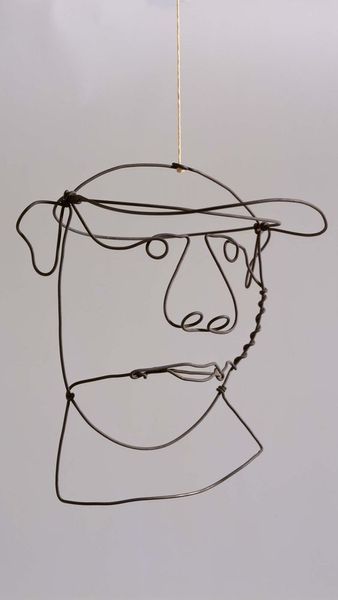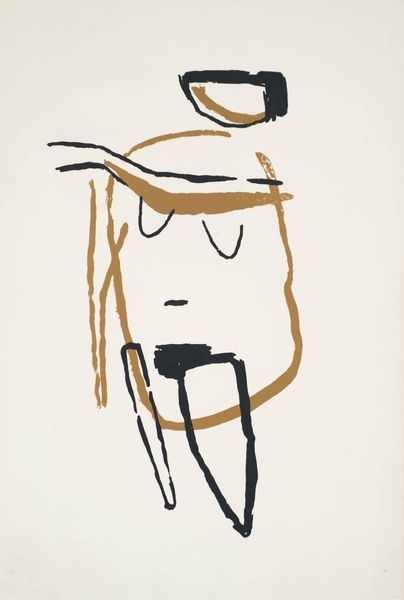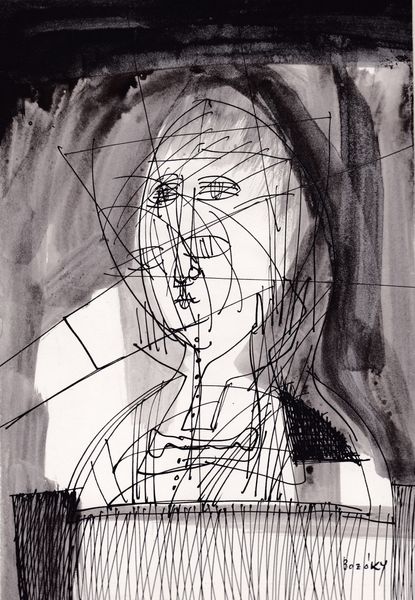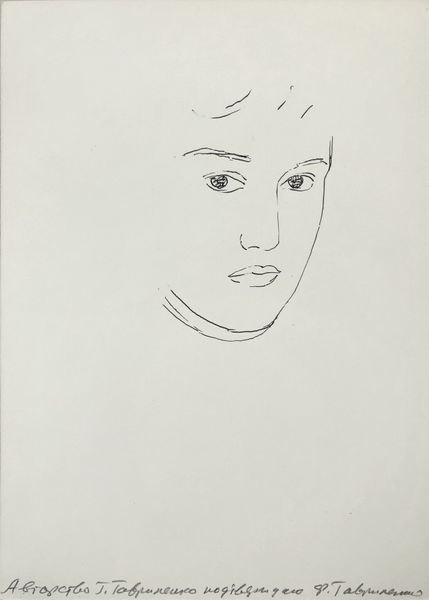
metal, sculpture
#
portrait
#
kinetic-art
#
head
#
metal
#
figuration
#
sculpture
#
line
#
modernism
Copyright: Alexander Calder,Fair Use
Curator: Before us stands Alexander Calder's "Self Portrait," created in 1968. It’s crafted from wire, a striking example of his ability to define form through simple lines in space. Editor: It's deceptively playful, isn’t it? Like a doodle escaped from a notebook. The stark lines against the white background feel very modern, but also somewhat vulnerable. Curator: I think that vulnerability stems from the reductive nature of portraiture at this moment in history, don't you think? Calder was really pushing against expectations about how identity could be expressed, using figuration in a period defined by minimalist exploration. The material itself implies a sense of precarity that aligns the work with notions of unstable selfhood. Editor: Absolutely. Considering Calder's background in engineering and mechanics, it’s fascinating to see him translate those principles to the human form. There’s a clear engagement with material possibilities and process. The bending, shaping, and joining of the wire – that's the labor. And, for him, the social implication becomes one of democratization of material. This wasn't marble or bronze, reserved for grand historical figures, but commonplace industrial material transformed into a self-representation. Curator: True, and let’s not ignore the influence of the burgeoning feminist art movement that demanded accessibility, and valued art born of unpretentious labor. What this means for a discussion about the 'self', within self-portraiture traditions, is really radical, especially as identity itself becomes contested within the work. The very construction feels deconstructed. Editor: It certainly breaks down the expected monumentality of the traditional self-portrait. Instead, he offers this fragile, almost ephemeral likeness, shaped from the basic building block of industry, almost mocking the expectation of who and what art can or should represent. The figure's transparency lets you see through it and is also so incredibly light. Curator: Calder manages to evoke presence while also highlighting absence and change. Thinking about the impact of consumerism in this era also speaks volumes here! It’s interesting how art navigates shifting power structures through materiality. Editor: Definitely! It brings art closer to the people. Seeing the sculpture from this angle illuminates not just Calder’s face, but also the transformative capacity of simple materials. It challenges the norms of artmaking. Curator: Exactly. Now, reflecting on our discussion, I wonder how contemporary audiences might interpret that subversion of artistic norms, given how many more conversations we're having about challenging the canon! Editor: Indeed. To consider the accessibility of materials, as you so rightly stated, helps viewers and critics alike continue to redefine that relationship.
Comments
No comments
Be the first to comment and join the conversation on the ultimate creative platform.
